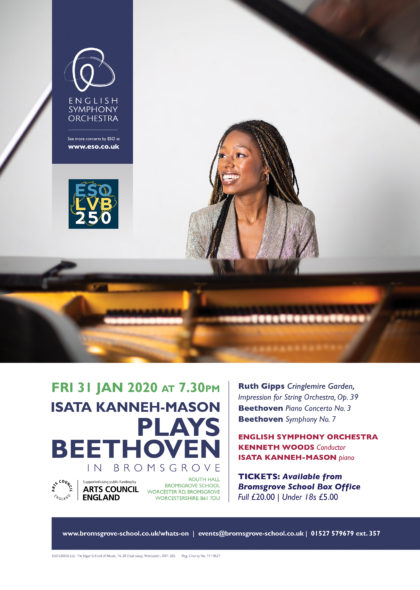“Playing Beethoven only gets more challenging”
That statement and its many variants is one of those musical truisms one hears so often, one almost ceases to be aware of what it means.
It’s not a statement I would make about every composer- demanding as it is, Richard Strauss’s music gets easier as you get to know it. Find a good fingering, do some slow practice, live with it a while, and those impossible-looking tone poems start to feel much less daunting.
But we’re talking about Beethoven.
Is it true?
And if so, why so?
My old cello teacher, Lee Fiser from the La Salle Quaret, used to liken the physical challenge of cello playing to pouring water through a funnel the wrong way. If you can be precise enough to direct everything you’re doing through that tiny little opening when it counts, everything opens out on the other side.
I think this is also a near perfect metaphor for the challenge of playing Beethoven’s music. Of course, it could apply to almost any repertoire- there is always a need for discipline and rigor in any piece. The issue with Beethoven is simply that the small end of the funnel is very small indeed, and that one is trying to pour a whole lot of technical, musical and spiritual stuff through it.
A large part of this has to do with how Beethoven works with time and rhythm. Beethoven’s music demands a great deal of vertical precision, and Beethoven increases the degree of difficulty for achieving this by asking for extremely quick tempos a great deal of the time. Brahms’ music, for instance, is extremely rhythmically complex, but there’s also room in his music for a degree of artful imprecision which actually helps to make the sound more beautiful and resonance. Not so in Beethoven, where imprecision just sounds, er, un-precise.
In fact, I often find myself telling orchestras I play Beethoven with that “this needs to be played with as much precision as Stravinsky.” Usually, I quickly correct myself to: “It actually probably needs to be played with more precision than Stravinsky.”
So, rhythm, tempo and time are a big part of why the hole of that funnel is so small. There are aggravating factors- balance is always a problem because Beethoven leaves that issue completely to the conductor and players. He expected his music to be played by all kinds and sizes of orchestras, so one always has to take into account what you have to do on this day in this hall with this band to make the right things heard. Intonation is also an issue- it seems easier in Beethoven than in Mozart and Bach, at first glance, but easier than Bach is still not easy, and the more together Beethoven is, and the better the balance, the more obvious intonation problems are.
But the size of the funnel hole is only half of what makes playing Beethoven’s music so challenging. The other half has everything to do with what we’re trying to fit through that tiny opening. It goes without saying- Beethoven’s music has a lot to offer. More than most! It’s music that needs color, passion, finesse, flexibility and every other quality that we long for in performance. In Beethoven’s case, when you’re trying to play at a tempo that at least seems to be of the spirit he’s asking for with his very demanding metronome marks, it’s all too easy to start giving up on things like varying one’s sound quality. Let’s face it, a lot of modern, high class Beethoven playing is high on funnel and short on water- very precise, stylish performances that are a bit lacking in emotional depth and musical contrast.
This can lead some listeners to beg for a return to days when we flipped our musical funnels around the easy way. Granted, it’s a lot easier to change one’s sound for a modulation if you allow as much time for it as feels comfortable. Celibidache’s Beethoven is exquisitely balanced, full of luminous colours and seems very dialed in to the meaning of each passage.
It’s just often a bit boring. When you open the neck of your funnel, everything gets too easy.
I think that keeping that funnel hole as small and focused as you can stand it is essential, as long as you are making sure that you’ve got just enough room to get all your musical and spiritual stuff through in the time allowed.
So, that’s what makes Beethoven’s music challenging. What makes it ever more challenging is pretty obvious- we’re always finding more stuff that we have to fit through that bloody funnel. Returning to the Eroica last week, I found all sorts of new, meaningful things. Again and again, I was realizing there were even more things that we needed to bring to life that I’d overlooked in previous performances.
So, we’re always finding more water, but we’re also making the damn opening smaller. As a conductor, you probably start to loose a bit of facility for learning scores as you get older, but the more experience you have, the better you hear. I can hear how things are fitting together with a lot more ruthless clarity than I could ten years ago.
And, of course, the more stuff you find in the score, the closer you realize you need to stay to what the composer is asking for. In this sense, the water and the funnel are sort of the same thing.
This is where one finally has to start making difficult decisions. For instance- on the one hand, we know that Beethoven’s music requires a unique level of rhythmic precision at high tempos. On the other hand, we also know that he was a great rubato player, and that he believed that tempo flexibility was an important part of playing his music well.
Here you have an apparent conflict- you’ve got a musical quality that you need to express: freedom and flexibility. That’s part of your water. Then, you’ve the structure of the music and the rigor with which it functions. That’s your funnel. One shouldn’t give up on rubato in Beethoven just because his music is rhythmically vertical and intense, but one also shouldn’t allow that flexibility to weaken the spine of the music. I’m just beginning to get to the point where I feel I can let the music move and breathe with the right kind of rubato without overdoing it to the point where it feels like I’m letting that get in the way of the structure of the music.
But, from performance to performance, one keeps re-evaluating things. I was really happy with the rubato aspects of my last performance of Beethoven 7 in June. Last week in the 3rd, I felt like maybe I’d pushed the envelope too far and made it too easy on myself in places. I suppose freedom that makes things harder is good, but freedom that makes things easier is bad. Part of that calculation has to do with my ongoing growth as a musician. Hopefully 4 months on and with the experience of the June concert behind me, I was looking a this show with a more critical eye. Again, the funnel opening keeps getting smaller the more you know and the more you can hear.
My next Beethoven performance is the 7th Symphony again, this time with the New Queen’s Hall Orchestra. The NQHO is a great, great virtuoso ensemble, which on the one hand, helps everything. Exceptional virtuosity can facilitate getting a lot more through your metaphorical funnel, but exceptional virtuosos find a lot more stuff to throw at it too. The NQHO also expressly encourages its players to take chances and express their ideas. Lockstep conformity is NOT the goal. Ivan Fischer wrote on this subject in his diary on his old website:
“Guest conducting. The Berlin Philharmonic is in excellent form, strong musical personalities in the orchestra. The wind solos in the Bruckner Symphony sounded beautiful. Strong personalities can create a side effect, though. If the feeling of rhythm and tempo is too strong, it is hard to make music together. This is the reason why top orchestras are more difficult to conduct, and the strongest musicians don’t function with ease in a chamber group. However, the problem is solvable and everyone in Berlin was most cooperative.”
Like Berlin, the NQHO is an orchestra that stresses the importance of strong personalities and taking risks. Risk taking-one more aspect of performance to fit through that funnel. Come November 4, we may have 50 or so strong willed artists all flinging gallons of water at the same funnel at the same time. If we all hit the mark, it will be pretty exciting.
UPDATE
Ten years on, I had completely forgotten writing this post, but I haven’t forgotten the lovely performance with the NQHO (review here). There have been quite a few other memorable Beethoven 7’s in that time. I have particularly happy memories of doing it in Bohemia with that fantastic Czech horn sound dominating the orchestra.
LvB7 is back on my desk now, with performance with the English Symphony to look forward to on 31 January and at the Three Choirs Festival this summer. Ten years on, as the funnel grows ever smaller, the volume of ideas and colours which must fit through it, ever bigger.


Really enjoyed reading this Kenneth! Precision vs spirit…or perhaps precision AND spirit! Coincidentally I just posted about B’s piano playing and I found a quote from Schindler that reporting that B’s piano playing was more exacting in his 1st and 2nd periods and more “tempo rubato” in his 3rd period.
“His older friends, who carefully followed the evolution of his spirit in every aspect, assure me that he developed this style of execution in the first years of the third period of his life, and that he turned completely away from his earlier manner of playing with fewer nuances.”
So perhaps Toscanini for Symphony 1-8 and Furtwangler for the 9th? ;)